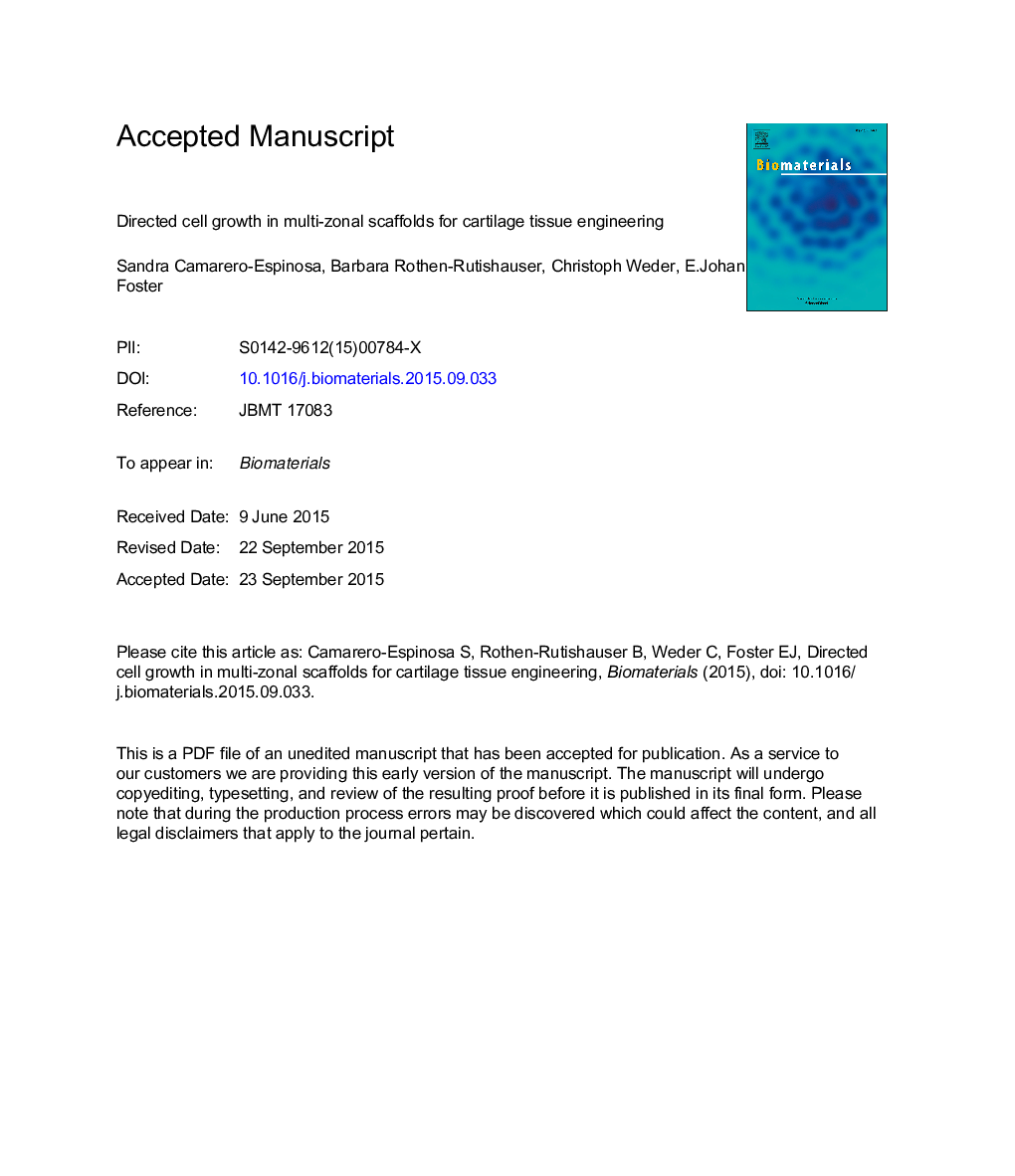| Article ID | Journal | Published Year | Pages | File Type |
|---|---|---|---|---|
| 6485350 | Biomaterials | 2016 | 50 Pages |
Abstract
Articular cartilage serves as a low-friction cushion in synovial joints and is vital for mammalian skeletal movements. Due to its avascular nature and the low cell density, the tissue has a limited ability to regenerate, and damage due to injury, wear and tear, or disease usually requires surgical intervention. While articular cartilage had been predicted to be one of the first tissues to be successfully engineered, it proved to be challenging to reproduce the complex architecture and biomechanical properties of the native tissue. Here we report the fabrication of multi-layer polymer nanocomposite scaffolds that mimic the structural design, chemical cues, and mechanical characteristics of mature articular cartilage. These scaffolds guide the morphology, orientation, and phenotypic state of cultured chondrocytes in a spatially controlled manner, support the growth of tissue with features that are reminiscent of the natural analogue, and promote localized hydroxyapatite formation to permit integration with the subchondral bone.
Related Topics
Physical Sciences and Engineering
Chemical Engineering
Bioengineering
Authors
Sandra Camarero-Espinosa, Barbara Rothen-Rutishauser, Christoph Weder, E. Johan Foster,
